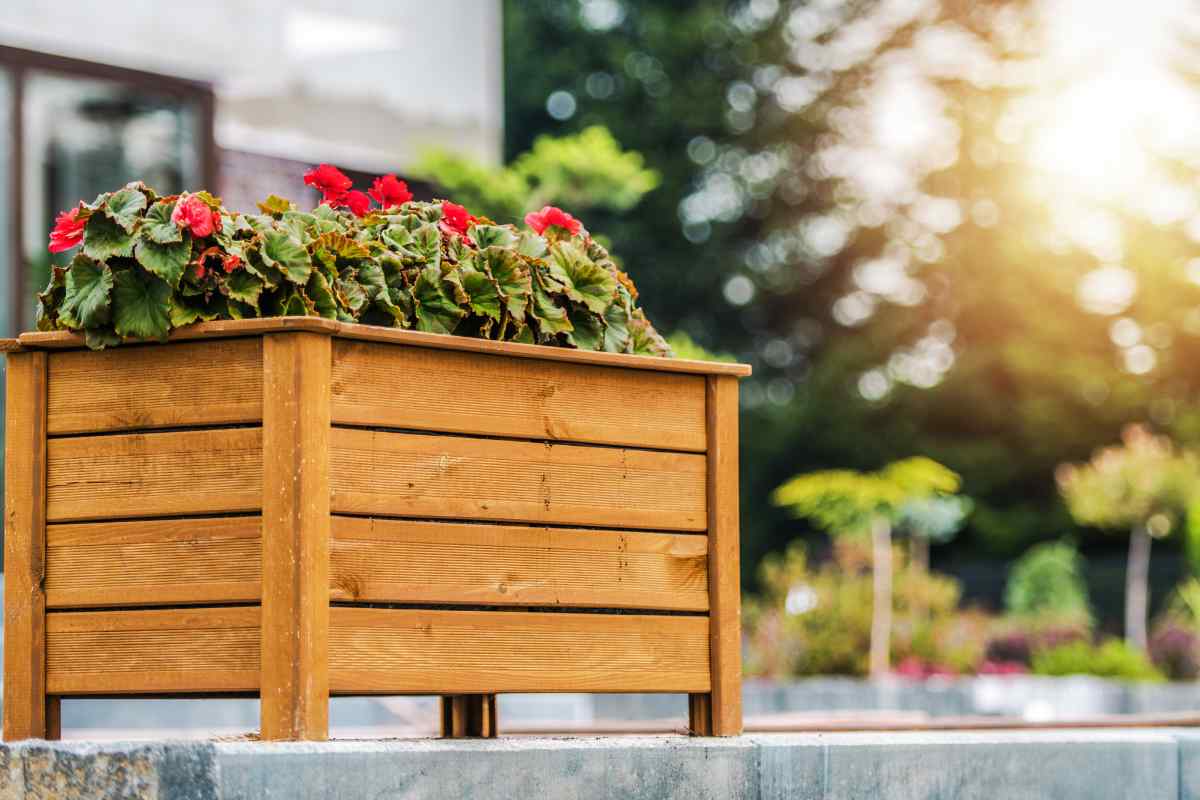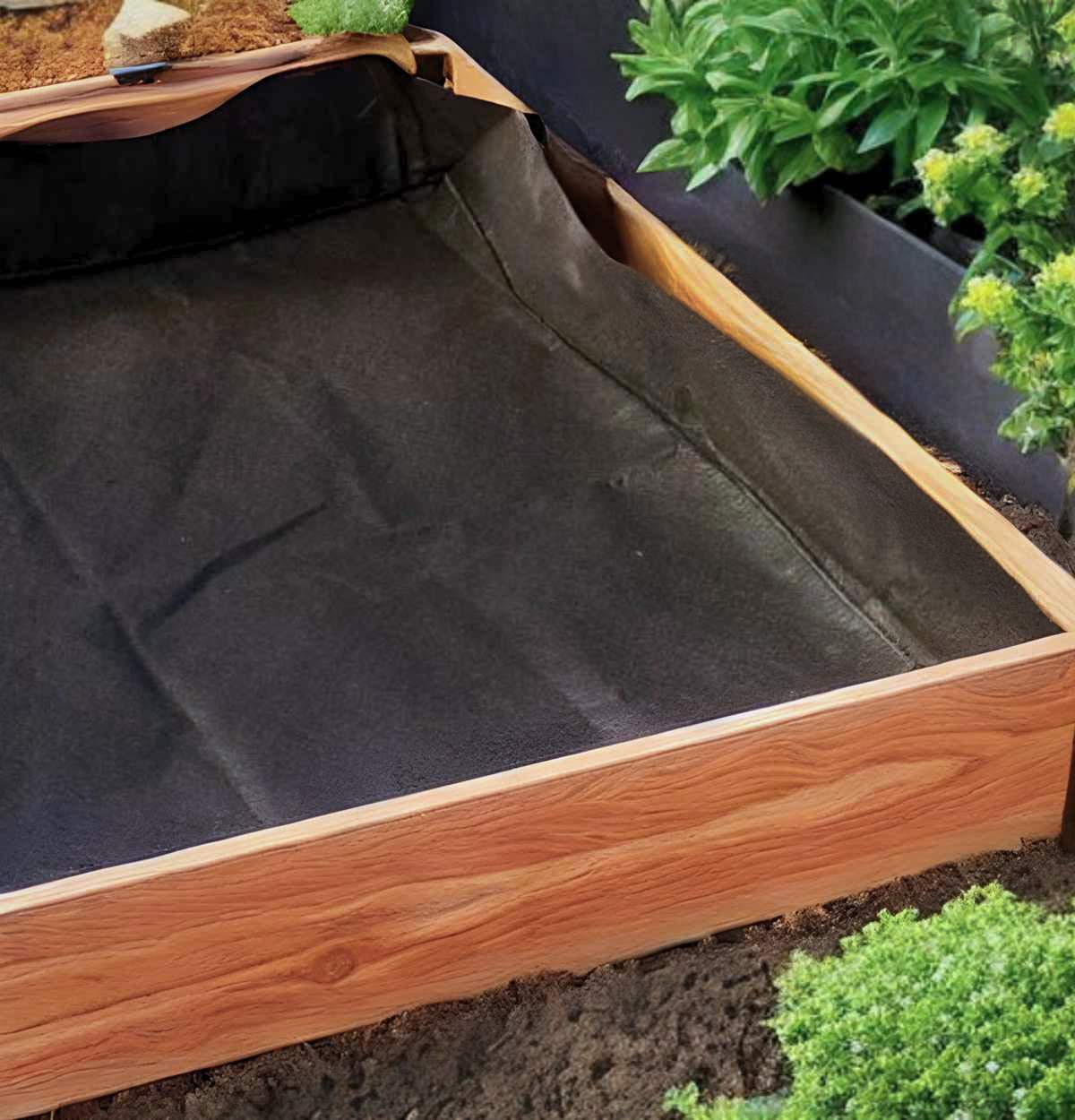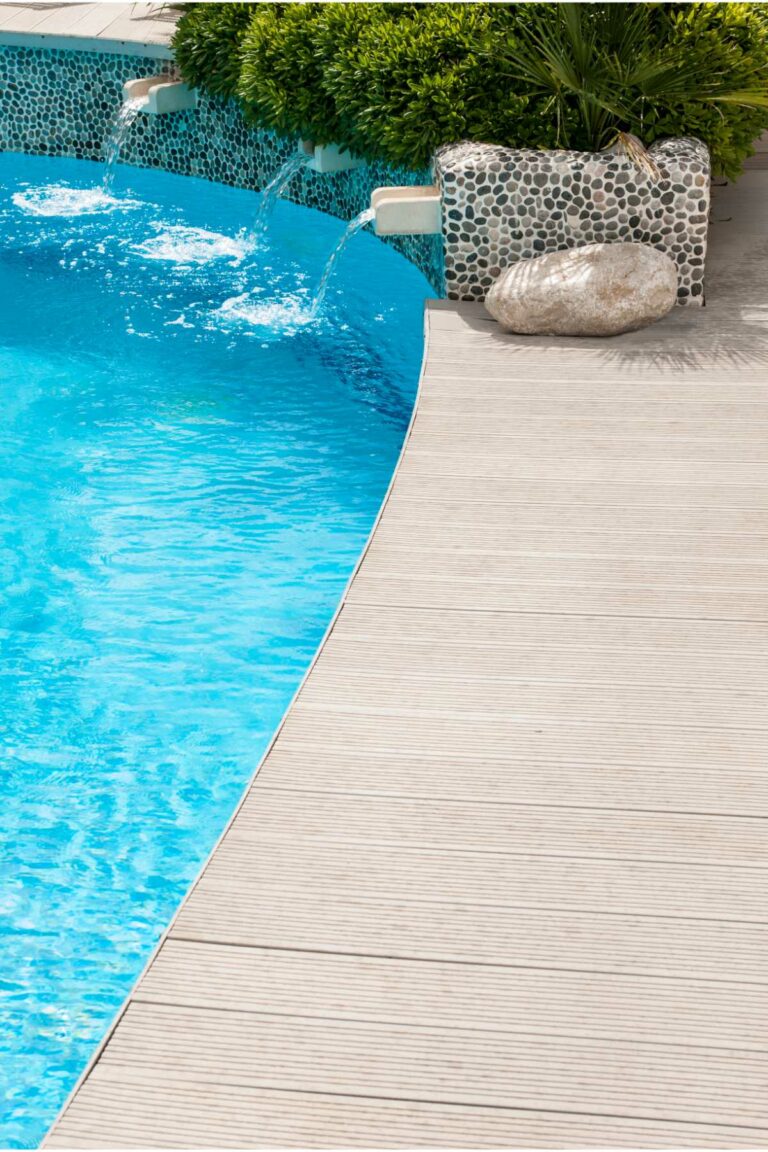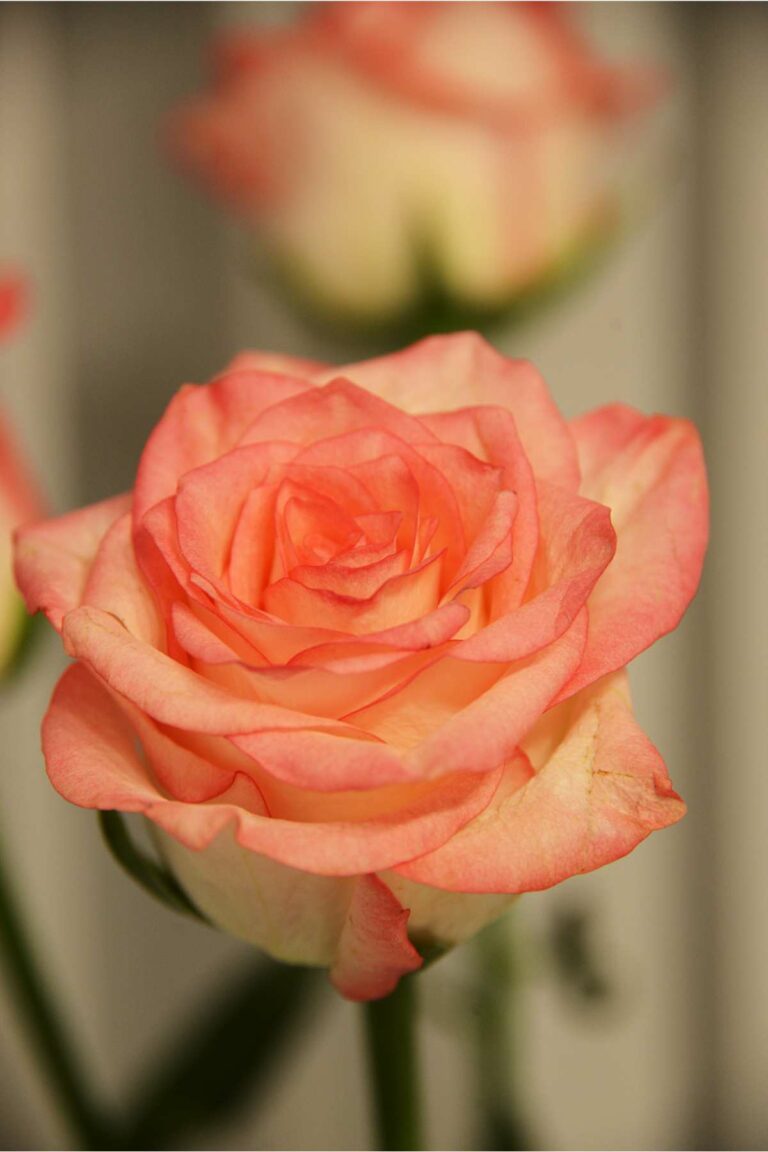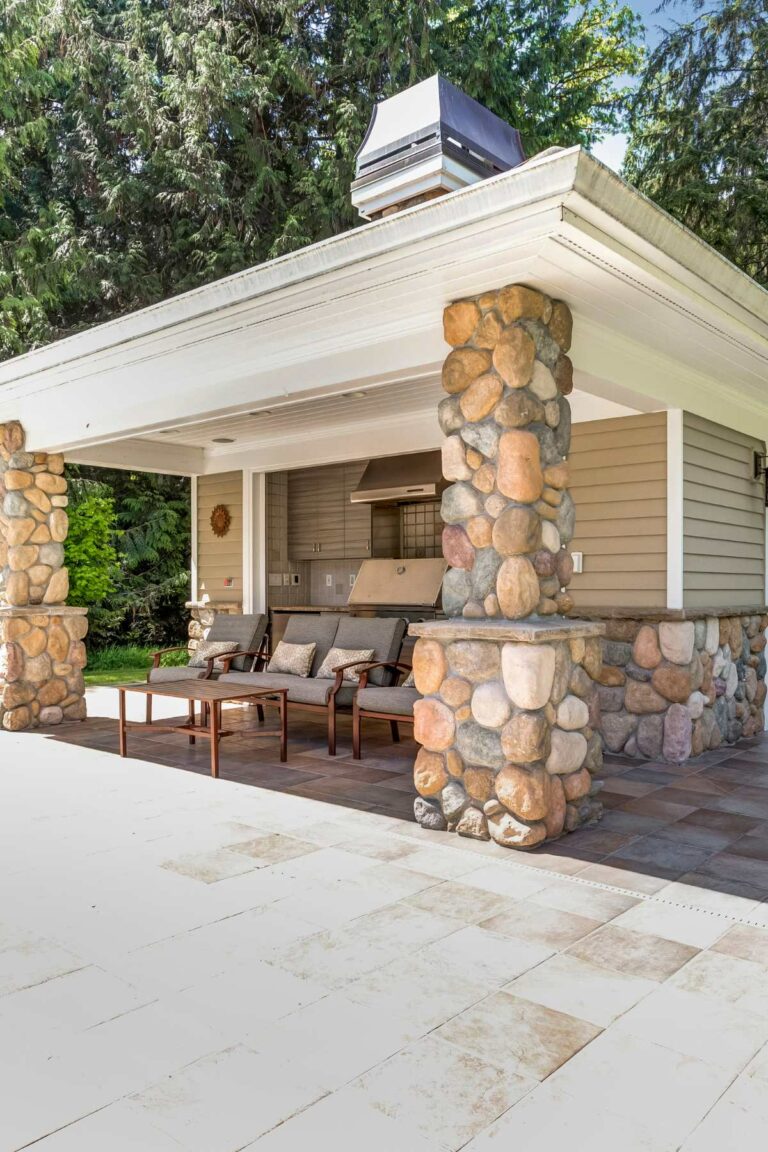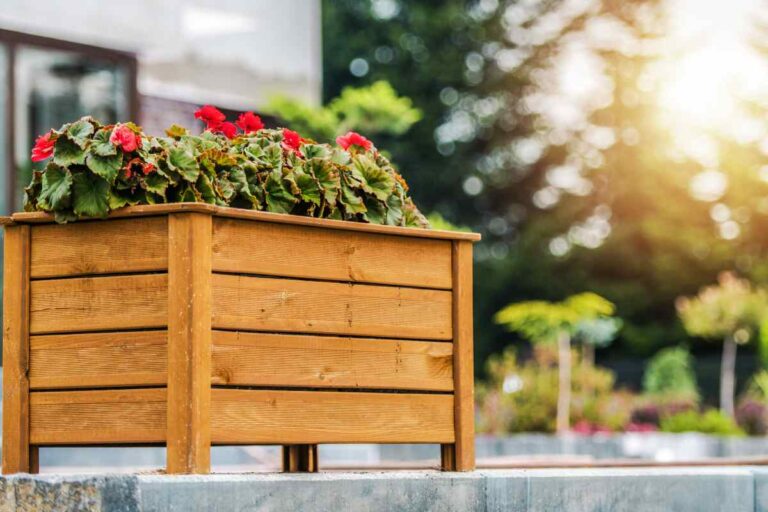Alocasia Frydek: From Classic to Variegated – Care, Propagation, and Buying Tips
Whether you’re eyeing the classic Alocasia Frydek with its rich green leaves and prominent veins, or the variegated type with its different colors in patches or streaks, this guide covers it all. From basic care tips like water and light requirements to how you can propagate these plants, and even where to find them for sale.
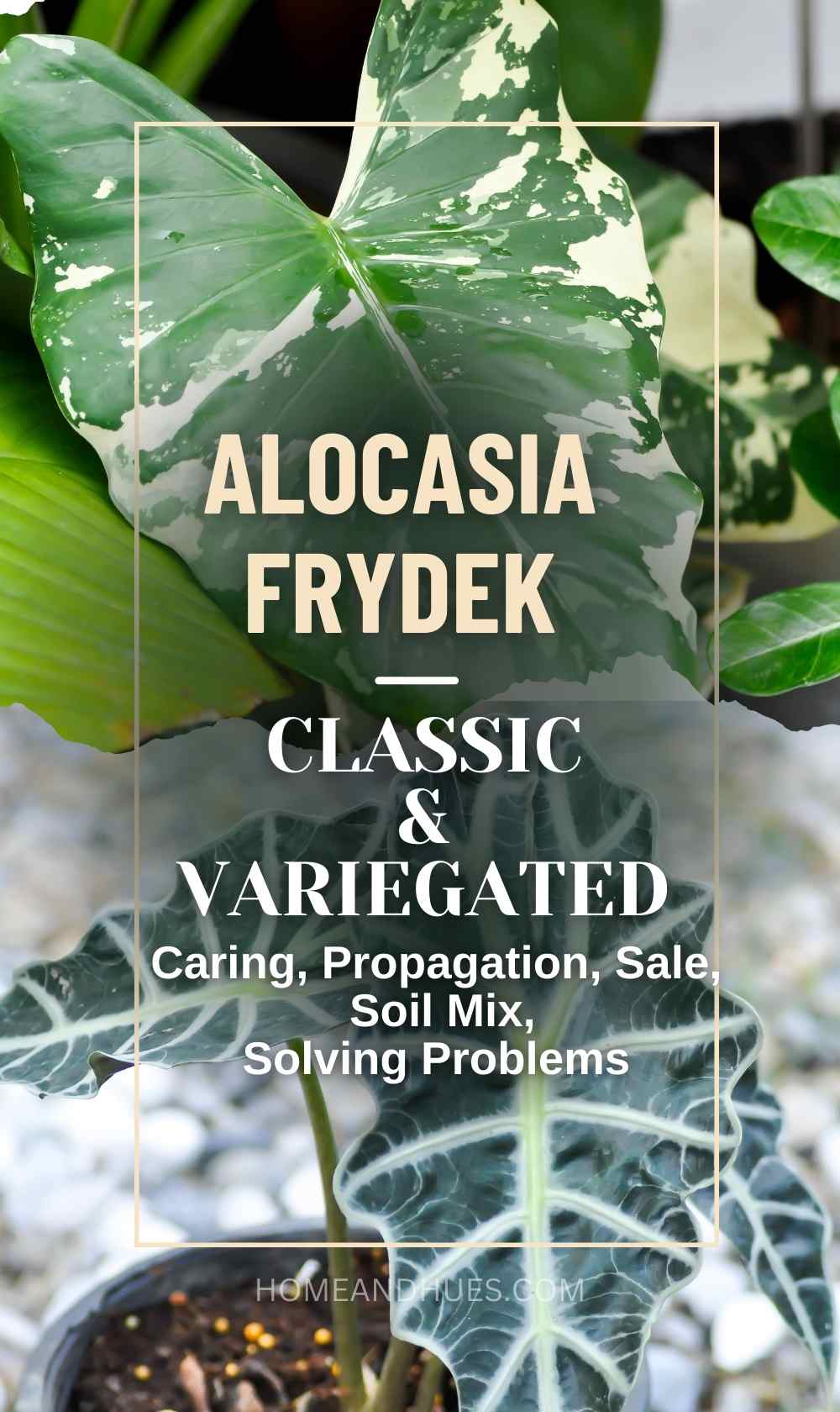
Alocasia Frydek Variegated vs. Classic
When it comes to Alocasia Frydek (tropical plant that belongs to the Araceae family, native to the rainforests of Southeast Asia), there are two main types you’ll come across:
- Classic Alocasia Frydek: the classic one is known for its deep, rich green leaves, each adorned with eye-catching, white veins that stand out. It’s a favorite among plant lovers for its elegant, yet bold appearance.
- Variegated Alocasia Frydek: the variegated Alocasia Frydek adds a bit more visual contrast. This variety has leaves that include not just green, but also patches or streaks of white or lighter green. These unique patterns are caused by variations in the plant’s leaf cell structure.
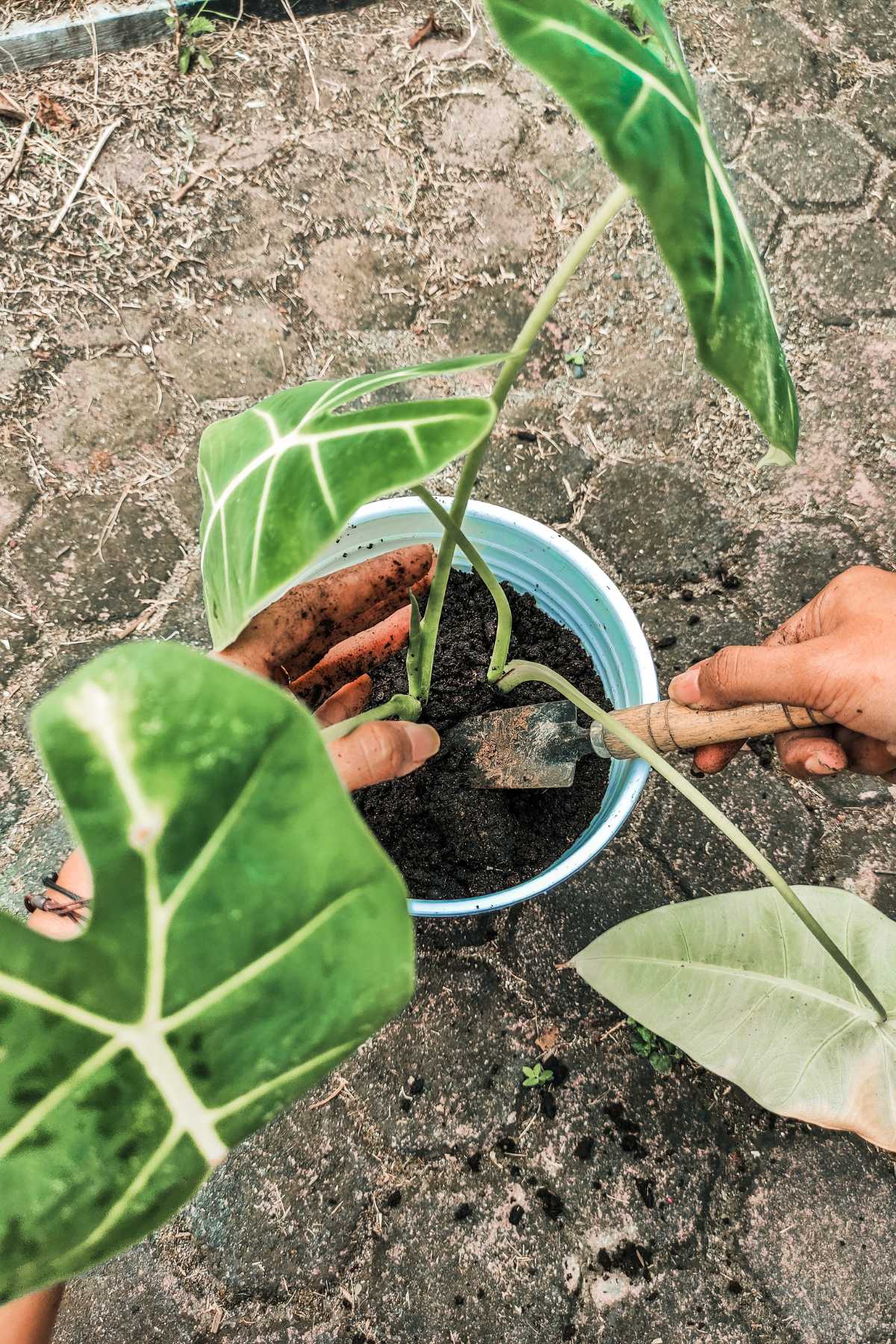
Related: Creative Indoor Planter Box Ideas For A Green Home
So, while both types of Alocasia Frydek share a similar shape and size, the key difference lies in their leaf coloring – the classic with its uniform green and the variegated with its mix of colors.
Understanding the Growth Pattern: Height and Size
Alocasia Frydek (both Variegated and Classic) has a moderate growth rate and can add a bold visual element to any indoor space.

- Height: On average, an Alocasia Frydek can reach up to 2 to 3 feet tall. This height is measured from the base of the pot to the top of the leaves. The growth in height is gradual, and it’s pretty fascinating to watch the plant reach upwards over time.
- Size: In terms of overall size, including the spread of its leaves, the plant can span approximately 2 feet wide. The large, arrow-shaped leaves are a significant contributor to its overall size. Each leaf can grow quite large, often being the main feature of the plant.
Related: Growing Camassia Leichtlinii: Tips And Tricks
Alocasia Frydek Variegation
Variegation in plants refers to the appearance of differently colored zones in the leaves, and in Alocasia Frydek, this variegation can be quite impressive.
- Pattern: The variegation in Alocasia Frydek usually appears as different shades of green. You might see sections of lighter green mixed with the deeper, richer green that’s typical of the plant.
- Genetic and Environmental Factors: Variegation is caused by genetic factors and can be influenced by environmental conditions. Adequate light is essential for maintaining the variegation. Too little light, and the plant may revert to more solid green.
- Care: Variegated plants sometimes require a bit more care, as the variegated parts of the leaves have less chlorophyll. This can make them more sensitive and less efficient at photosynthesis.
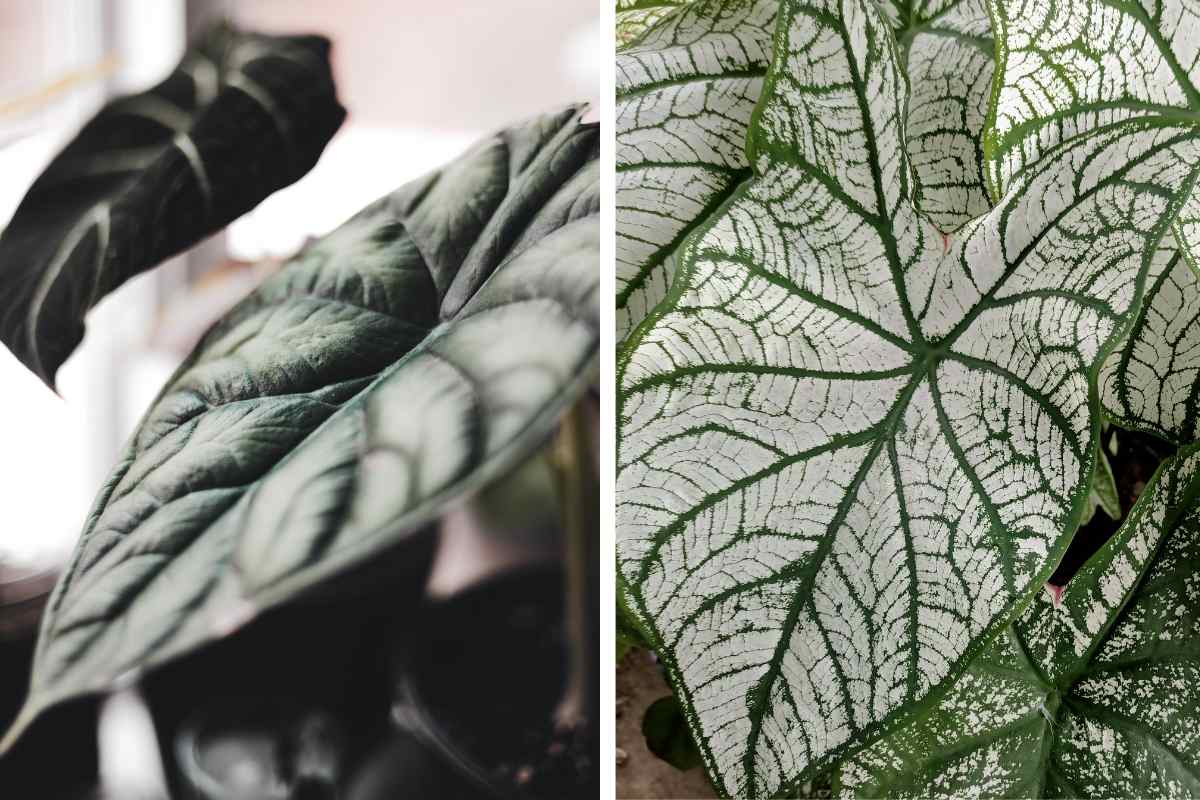

Variegation Cycle in Alocasia Frydek
When I bought my variegated Alocasia Frydek, the expert I bought it from explained how the variegation pattern on the plant changes over time: that this plant often starts with a lot of variegation – lots of different colored areas – on the new leaves. But as it grows and produces more leaves, the amount of variegation can decrease.
This means newer leaves might have less of those different colored patches. Then, after some time, the amount of variegation might increase again on even newer leaves. So, the pattern of color changes in the leaves can go back and forth over time.
Related: Ornamental Plants With Names
Alocasia Frydek Flower
The flowering of Alocasia Frydek is an event that doesn’t happen very often, especially when grown indoors. When it does flower, it’s a sign of a well-cared-for plant. The Alocasia Frydek produces a bloom that’s quite unique. It’s flowers are a bonus, but they aren’t the main attraction of this plant. Alocasia Frydek is primarily grown for its stunning foliage.
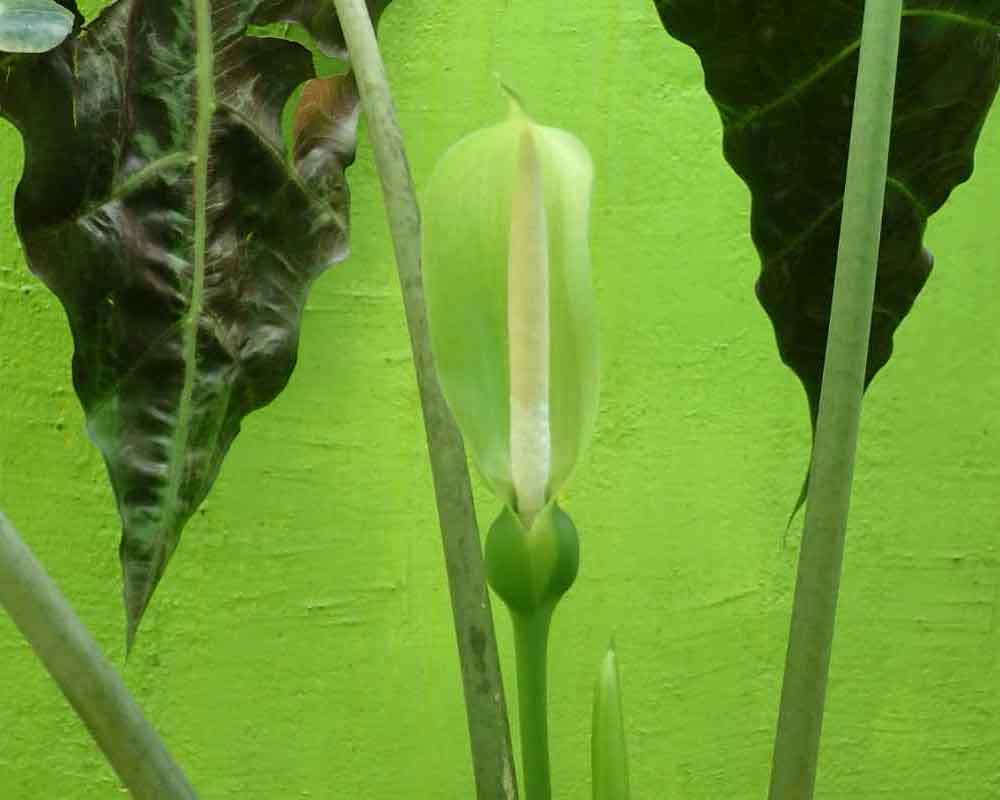
- Appearance: The flower resembles a calla lily, with a spathe and spadix structure. The spathe is like a leafy bract that wraps around the spadix, a fleshy spike where the tiny actual flowers grow.
- Color: The color of the spathe is usually a pale green or creamy white, which contrasts beautifully against the dark, lush leaves of the plant.
Caring for Your Alocasia Frydek
Light Requirements: Finding the Sweet Spot
Alocasia Frydek loves bright, indirect light. Direct sunlight can be harsh and burn the leaves, so avoid placing it right under the sun. A spot near a window that gets filtered light is best. Placing them near a north or east-facing window is ideal. If the leaves start to fade, it might need more light. If they get scorched, it’s getting too much direct sun.
Water Requirements: Striking the Right Balance
These plants like consistently moist soil but hate soggy feet. Water them when the top inch of soil feels dry. Stick your finger in the soil to check. During winter, cut back on watering as the plant doesn’t grow much. Overwatering can lead to root rot, a common issue with these tropical plants. Tip: Allow excess water to drain away and never let the plant sit in standing water.

The Importance of Mist and Humidity
Alocasia Frydek thrives in a humid environment. The ideal temperature range for this plant is between 65°F and 80°F (18°C and 27°C). Consistently high humidity levels of 60% or more will contribute to the plant’s overall well-being. If your home is dry, mist the leaves regularly or use a humidifier. This mimics their natural tropical habitat and keeps them happy. Dry air can cause brown leaf edges.
Best Soil for Alocasia Frydek Types
When it comes to the ideal soil mix for Alocasia Frydek, the key is to create a balance that supports healthy growth while providing proper drainage. These plants don’t like to sit in waterlogged soil, but they do need consistent moisture, so creating an airy and moisture-retentive medium is essential.
Heads up: some links are affiliated & I may receive a small commission from qualifying sales. For more info see my disclaimer policy.
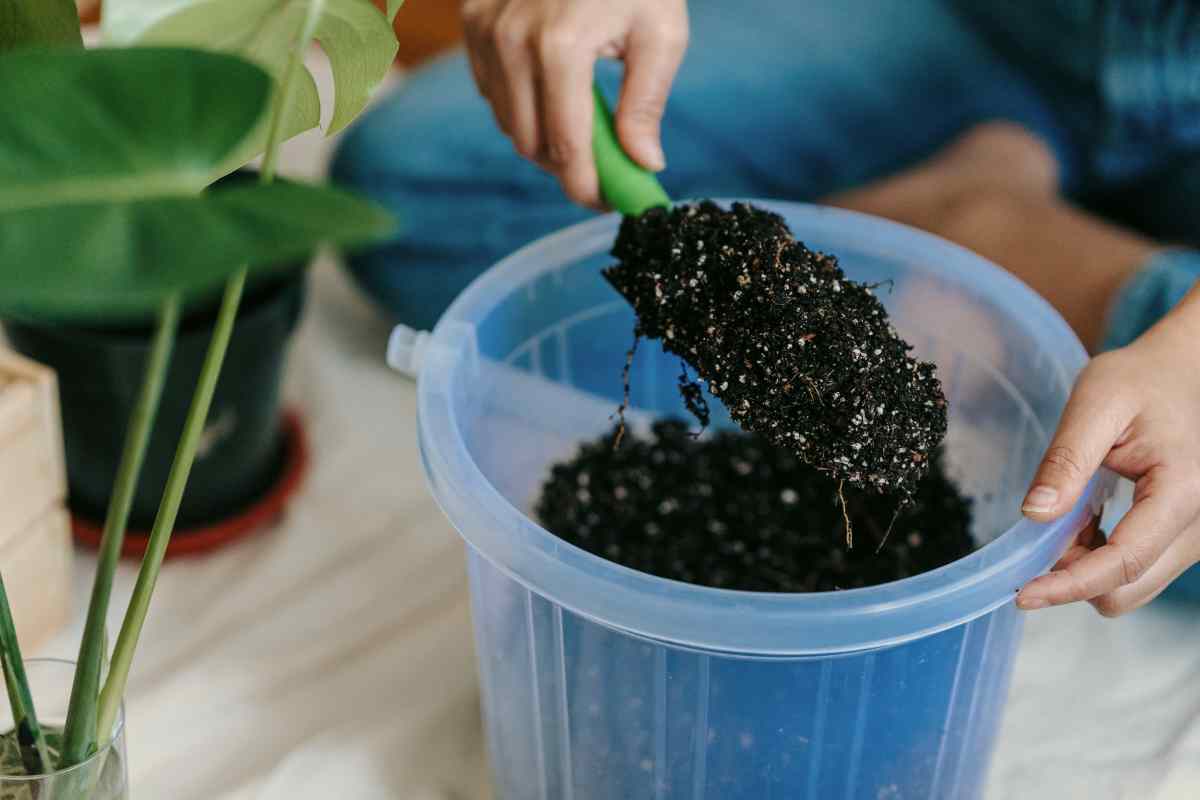
Here’s a combination that works well:
- A Well-Draining Potting Mix: Start with a high-quality indoor potting mix as your base. This type of soil is formulated to hold moisture while allowing excess water to drain away.
- Perlite or Pumice: Add in perlite or pumice to increase the drainage capabilities of your soil mix. About 20-30% of perlite or pumice mixed into your potting soil will do the trick. These materials create air pockets within the soil, preventing it from becoming too dense and waterlogged.
- Orchid Bark or Coconut Coir: Including orchid bark or coconut coir (about 10-20% of your mix) is great for aeration and mimicking the plant’s natural habitat. These components add structure to the soil, allowing roots to grow freely and access the air they need.
- Peat Moss or Coco Peat: To help the soil retain some moisture, adding a bit of peat moss or coco peat can be beneficial. However, don’t overdo it, as too much can make the soil too soggy.
This combination creates a soil environment that is airy, well-draining, yet capable of retaining the right amount of moisture. Remember, the goal is to keep the soil moist but not wet. Regularly check the moisture level of the soil and adjust your watering routine as needed.
Every Alocasia Frydek can react differently to its environment, so it might take a little tweaking to find the perfect balance for your specific plant and home conditions.
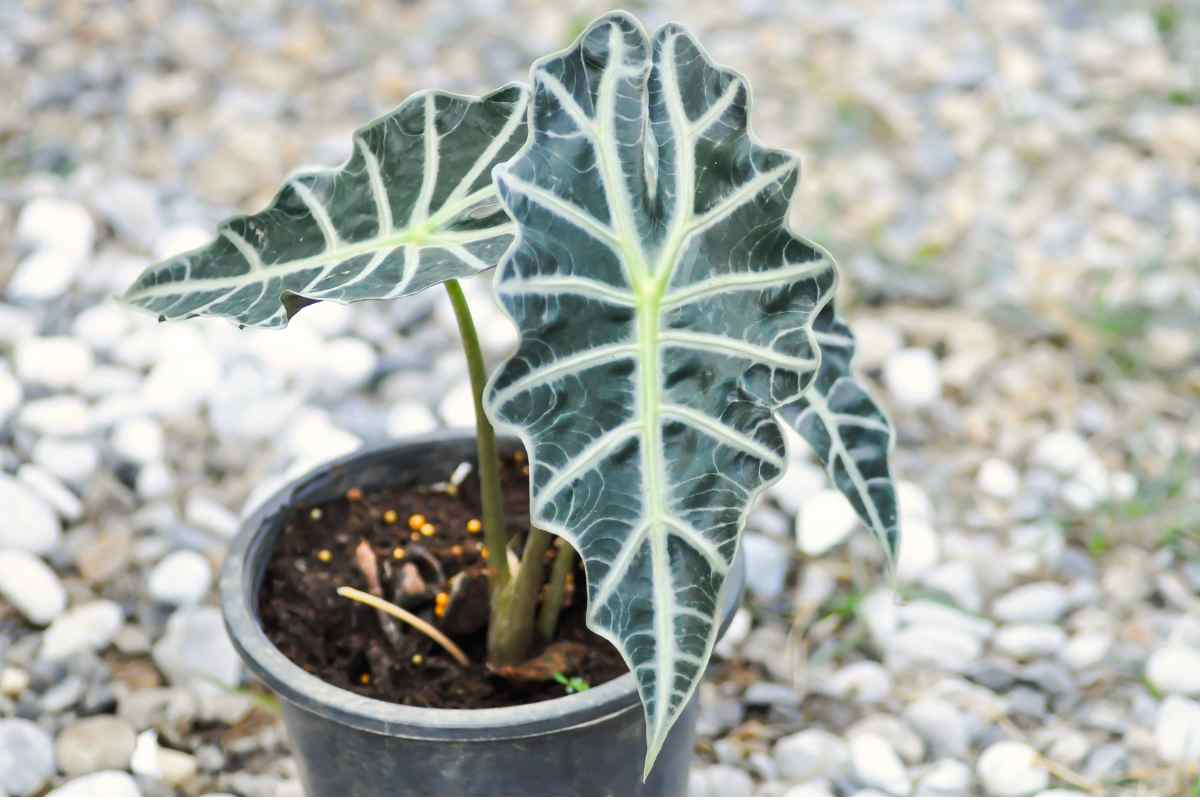
Alocasia Frydek Fertilizer
During the growing season, which typically spans from spring to summer, it is beneficial to fertilize your Alocasia Frydek every 2-4 weeks. Choose a balanced, water-soluble fertilizer and dilute it to half the recommended strength. Applying fertilizer during the dormant period is unnecessary.
Pruning
Regular pruning helps maintain the shape and overall health of your Alocasia Frydek. Remove any yellowing or damaged leaves by cutting them close to the base of the stem. Additionally, trimming the plant’s leggy stems can encourage bushier growth and a more compact appearance.
Solving Common Care Problems For Indoor Care
If your plant looks unhappy, it’s often due to light or water issues. Check these first. Also, ensure it’s not in a drafty spot or near a heat source, as this can stress the plant.
1. Yellowing Leaves: Causes and Solutions
Yellow leaves present in Alocasia Frydek species usually signal overwatering or poor drainage. Make sure your pot has drainage holes and you’re not letting the plant sit in water. If the soil is soggy, let it dry out a bit more between waterings. Sometimes, yellow leaves can also mean it needs more nutrients. Consider using a balanced liquid fertilizer during the growing season.
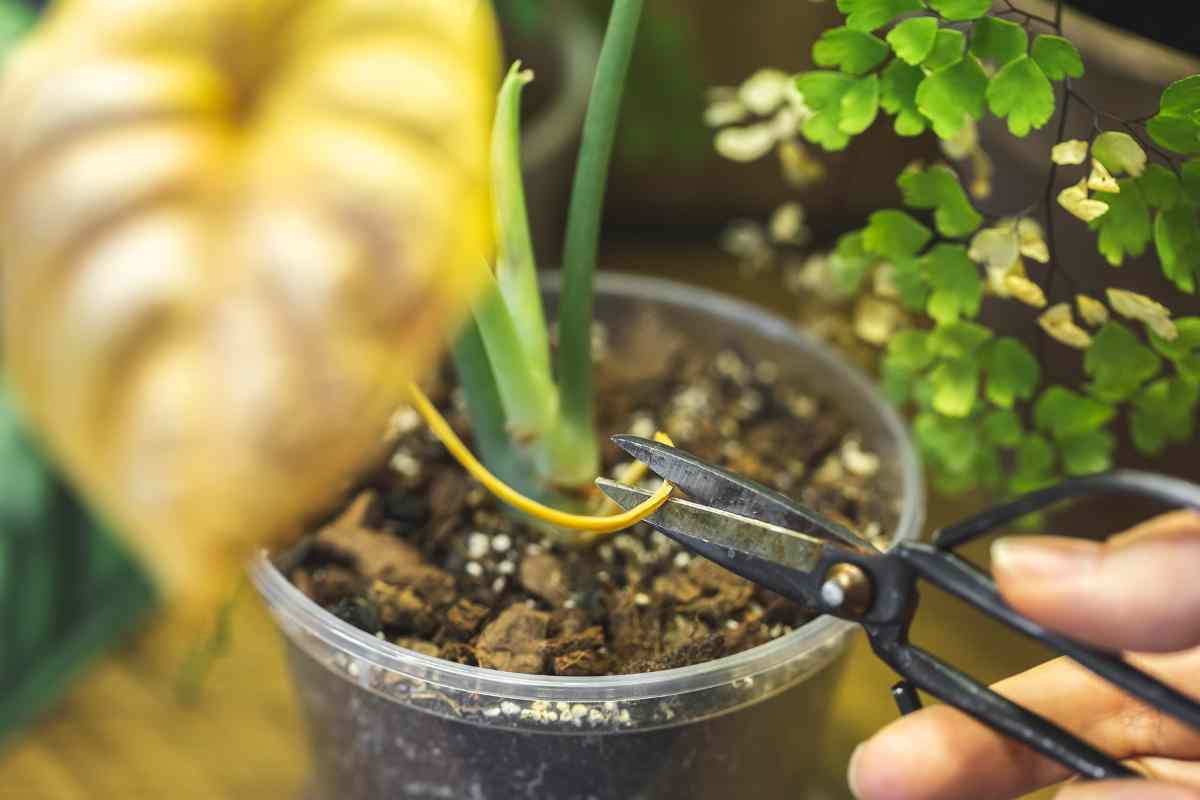
2. Drooping Leaves: Why It Happens and How to Fix
Droopy leaves can be a sign of both underwatering and overwatering. Check the soil moisture. If it’s dry, give your plant a drink. If it’s wet and soggy, you might be overdoing the watering. Also, ensure your plant is getting enough humidity. Drooping can be a response to dry air.
3. Dealing with Tap Water Issues
Alocasia Frydek can be sensitive to chemicals commonly found in tap water, such as chlorine and fluoride. These chemicals can lead to leaf burn or other issues. Here’s how to mitigate that:
- Let Water Sit: Fill a watering can with tap water and let it sit for 24-48 hours. This allows some of the chemicals to evaporate.
- Rainwater or Distilled Water: If possible, use rainwater or distilled water for watering. These are gentler on the plant and can prevent the build-up of minerals in the soil.
- Regular Flushing: Every few months, flush the soil with distilled water to wash away any mineral build-up. This involves slowly pouring water through the soil until it runs out of the drainage holes, then repeating a few times.
Alocasia Frydek Propagation
Step-by-Step Guide:
- Choose the Right Time: The best time to propagate your Alocasia Frydek is during the spring or early summer when the plant is actively growing.
- Preparation: Before you start, make sure you have a sharp, clean knife or pair of scissors, a new pot with well-draining soil, and water.
- Division: Carefully remove your Alocasia Frydek from its current pot. Gently separate the roots to find natural divisions. Look for sections where there are visible roots and at least one or two leaves.
- Cutting: Using your clean, sharp tool, cut the sections apart. Ensure each new section has roots attached.
- Potting: Plant each division in its own pot filled with a well-draining soil mix. The soil should be moist but not soggy. See details in the post above.
- Aftercare: Place the new pots in a warm, humid spot with indirect light. Keep the soil consistently moist, but be careful not to overwater.
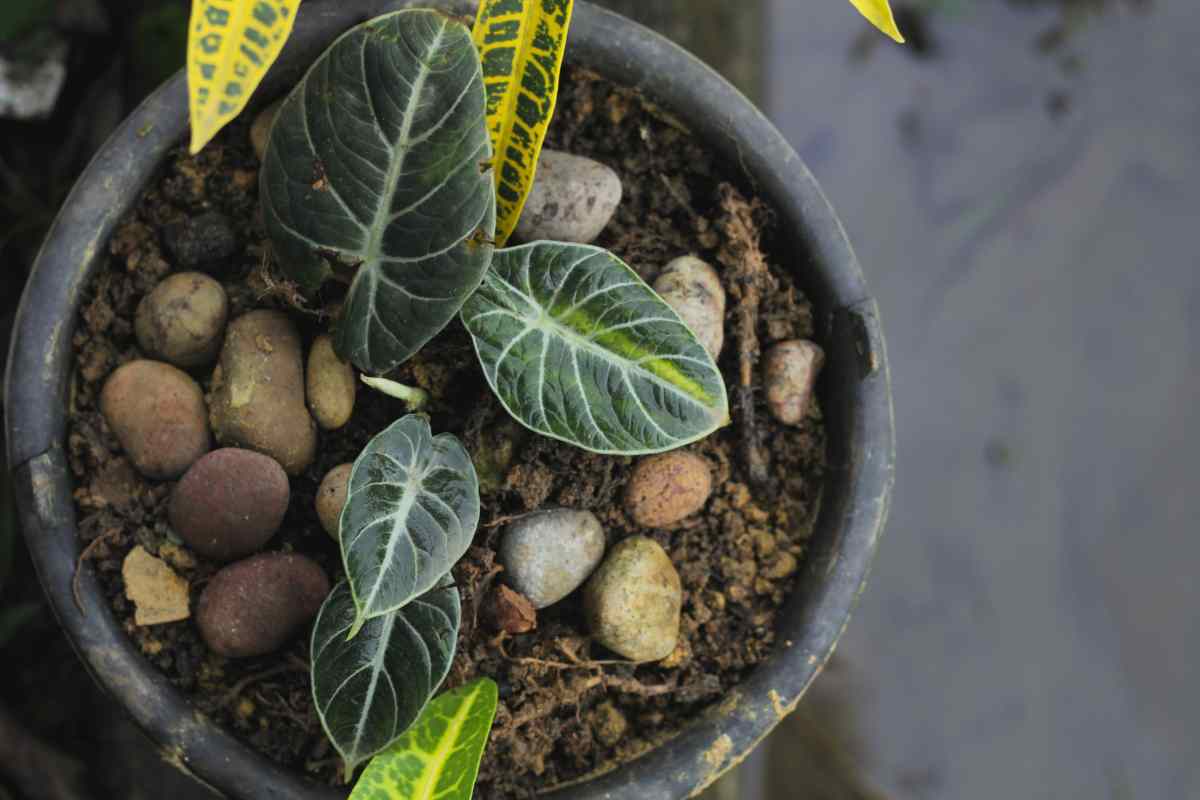
Variegation in Alocasia Frydek: The Role of Corms in Propagation
In the case of variegated plants like some Alocasia Frydek varieties, the corm plays a crucial role in the plant’s ability to maintain and propagate its variegation. Variegation is a genetic trait, and the corm, being an integral part of the plant’s overall structure and growth system, carries this genetic information.
When you propagate an Alocasia Frydek from its corm, you’re essentially using a piece of the plant that has the genetic blueprint for variegation. This means that any new plants grown from these corms have a chance of exhibiting the same variegated patterns as the parent plant.
However, it’s important to note that variegation can be unstable, and the degree to which it appears in new growth can vary. Some new plants might show more variegation, less, or none at all. This unpredictability is part of what makes growing variegated plants both exciting and challenging.
Tips for Growing Alocasia Frydek Babies
- Consistent Moisture: Keep the soil evenly moist as the new plants establish themselves. This doesn’t mean wet, just damp.
- Light: Provide bright, indirect light. Avoid direct sunlight, which can be too intense for young plants.
- Humidity: Alocasia Frydek plants love humidity. If you live in a dry area, consider using a humidifier or placing a water tray near the plants.
- Patience: Growth can be slow initially, so don’t worry if your plant babies don’t shoot up overnight. Give them time to adjust and grow.
- Fertilizing: Once your plant babies have settled and show new growth, you can start a light fertilizing routine. Use a balanced, water-soluble fertilizer diluted to half the recommended strength.
Remember, every plant is different, so observe and adjust your care as needed for your Alocasia Frydek babies.
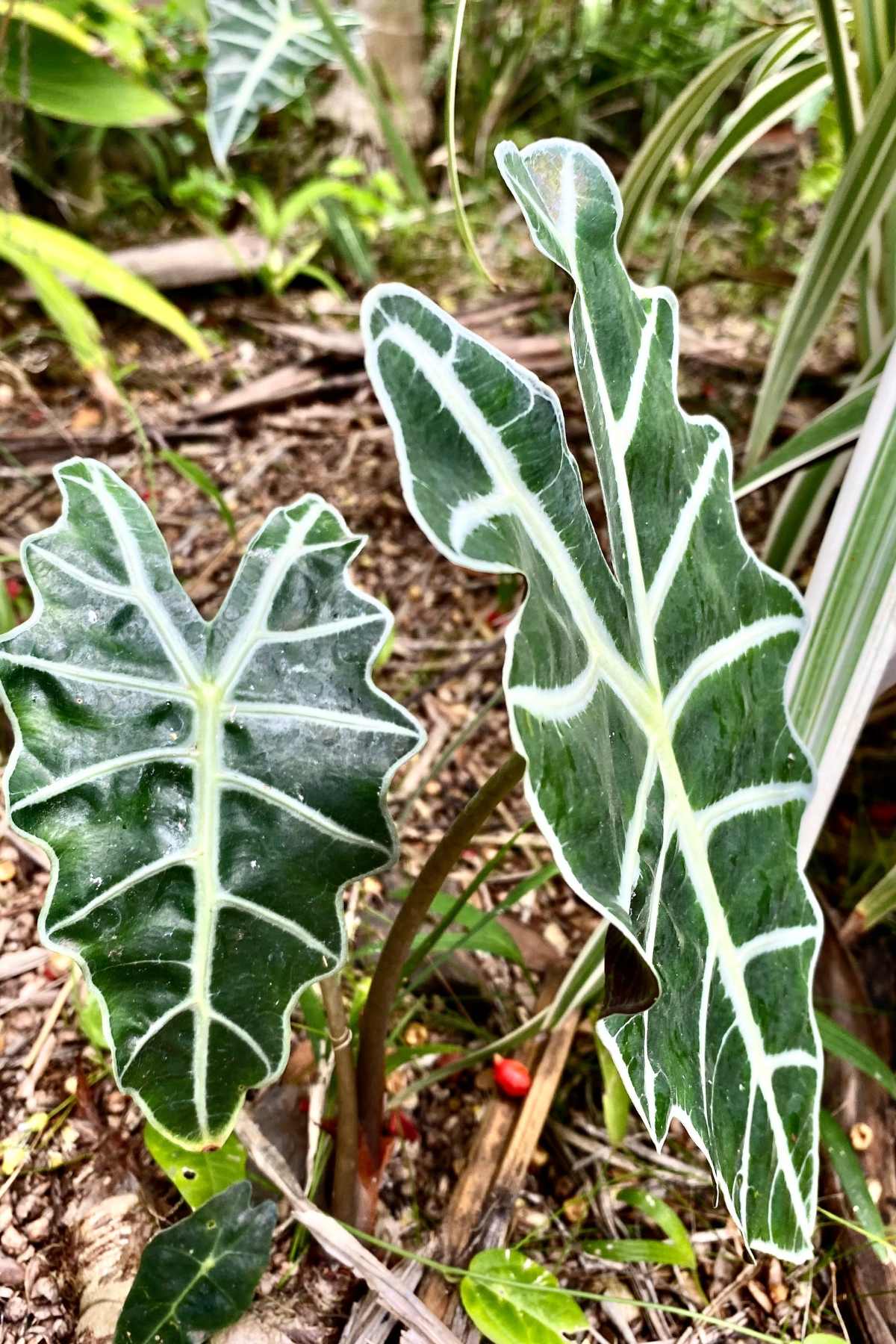
Related: 5 Captivating Purple Perennial Flowers For Your Garden
Buying Your Alocasia Frydek
Alocasia Frydek Price Range: What to Expect
- The price of Alocasia Frydek can vary based on size, health, and whether you’re buying a classic or a variegated variety. Variegated plants are often more expensive due to their rarity and unique appearance. Typically, prices range from modest to somewhat expensive. For example some people paid $85 for a 5 leaf plant and they feel it was a good deal.
- Smaller plants are usually more affordable, while larger, more mature specimens can be pricier, especially if they show extensive variegation.
Where to Find Alocasia Frydek for Sale
- Check local nurseries and garden centers. They often carry a variety of Alocasia plants.
- Online plant shops and marketplaces are another great option. They offer a wider selection and the convenience of home delivery such as rooted in plug form.
- Plant fairs and exhibitions can sometimes be goldmines for finding unique or rare plants, including different varieties of Alocasia Frydek.
- Check every so often with big box stores such as Walmart, Home Depot or Lowe’s. Some people have shared their rare finds (variegated Alocasia) from big box stores, which they found accidently. The large growers usually don’t pay attention to the plant variation types.
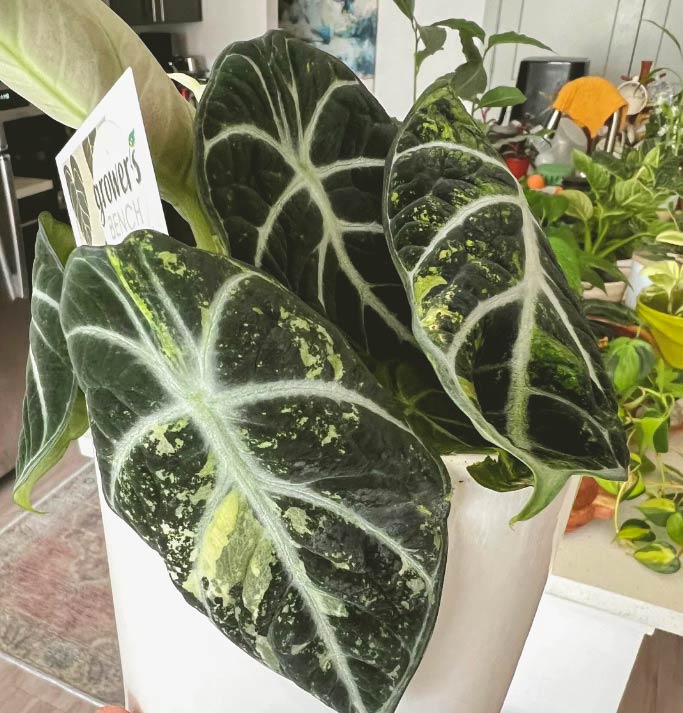
Choosing the Right Alocasia Frydek Bulb
- Look for bulbs that are firm to the touch with no signs of rot or excessive dryness.
- If possible, choose a bulb that already shows some signs of growth, like emerging shoots or roots, as this indicates a healthy, viable plant. Online you can purchase bulbs from etsy as well.
FAQs
Water when the top inch of soil feels dry, usually once a week, but adjust according to your home environment and the season.
Yes, fertilize with a balanced liquid fertilizer during the growing season (spring and summer), but reduce or stop in the fall and winter.
It prefers bright, indirect light. Low light can lead to leggy growth and fewer leaves.
No, propagating Alocasia Frydek (or most Alocasia varieties) by just cutting a leaf won’t work. These plants need a part of the root system, specifically a section with a node or a rhizome, to successfully propagate. The node or rhizome is where new roots and shoots will develop. Simply cutting a leaf and placing it in water or soil won’t lead to the formation of a new plant.
No, corms themselves don’t display variegation. Variegation is a characteristic of the leaves, not the corms. However, corms can carry the genetic potential for variegation in the plants they produce.
No, variegated Alocasia corms are not variegated themselves. The variegation is a trait that appears in the leaves, not in the corms. However, corms from a variegated Alocasia plant carry the genetic information that can potentially produce variegated leaves in new plants.
To promote variegation in Alocasia Frydek, ensure it gets plenty of bright, indirect light, and provide balanced nutrition and consistent moisture. High humidity is also beneficial. Keep in mind that, variegation is mainly genetic, so these steps can help maintain it but won’t create it in non-variegated plants.
Each Alocasia Frydek has its own personality and may require slight adjustments in care. Observing your plant regularly is key to keeping it healthy and thriving.
To sum it up good caring for an Alocasia Frydek involves providing bright, indirect light and maintaining a consistent watering schedule, ensuring high humidity and using well-draining soil. Also watching out for signs of distress like yellowing or drooping leaves and adjusting care accordingly.
©HomeAndHues. Content and photographs are copyright protected and need prior permission to use. Copying and/or pasting full text or media to other websites and any social media is strictly prohibited. Sharing and using the link of this post is both encouraged and appreciated!

